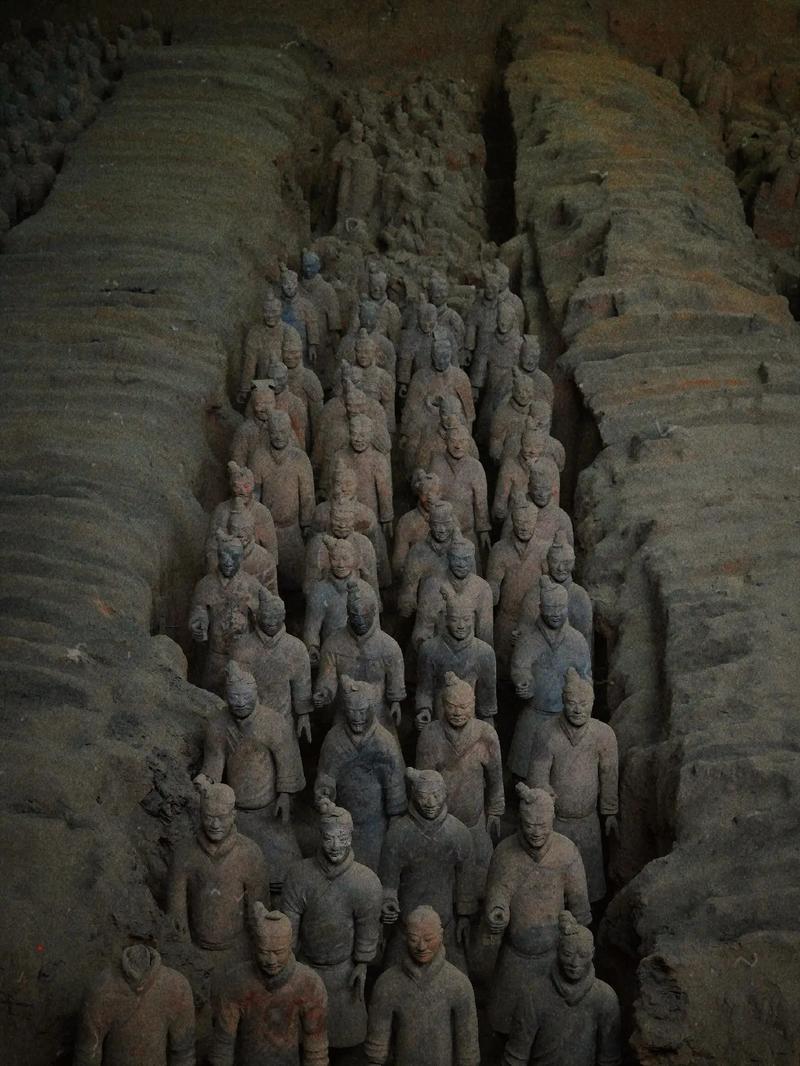
When Was the Terracotta Army Discovered?
No doubt thousands of statues still remain to be unearthed at this archaeological site, which was not discovered until 1974. But how did such a magnificent discovery occur after nearly 2,200 years?
The Accidental Discovery
It was the spring of 1974, in a small village near Xi'an, China. A group of farmers was digging a well, hoping to find water to irrigate their crops. As their tools struck the ground, they unearthed something much more significant: fragments of terracotta, baked clay, unlike anything they had ever seen. These weren't broken pots or tools, but pieces of life-sized warriors, meticulously crafted with unique facial features and detailed armor.
Unveiling an Army
Word of the discovery spread quickly, reaching the ears of archaeologists who immediately recognized the significance of the find. The farmers had stumbled upon not just a few statues, but an entire army of terracotta warriors, horses, and chariots, buried alongside China's first emperor, Qin Shi Huang.
Qin Shi Huang's Mausoleum
The Terracotta Army, as it came to be known, was no mere collection of statues. It was part of a vast necropolis, a city of the dead, built to accompany Qin Shi Huang into the afterlife. This emperor, who unified China in the 3rd century BC, was obsessed with immortality and sought to rule for eternity. His tomb complex, which remains largely unexcavated, is a testament to his power and ambition.
The Legacy of the Terracotta Army
The discovery of the Terracotta Army was a seminal event in archaeological history. It provided an unparalleled glimpse into the military might and artistic mastery of the Qin dynasty. The sheer scale of the find, with thousands upon thousands of warriors, each with individual characteristics, stunned the world. Today, the Terracotta Army is a UNESCO World Heritage Site, attracting millions of visitors each year who come to marvel at these silent sentinels of a bygone era.
Q&A
Q: Why was the Terracotta Army buried with Qin Shi Huang?
A: The Terracotta Army was meant to serve as a guardian force for the emperor in the afterlife. Qin Shi Huang, obsessed with immortality, believed that he would continue to rule in the next world and needed an army to protect him.
Q: What is the significance of the Terracotta Army?
A: The Terracotta Army provides invaluable insights into the military practices, artistry, and beliefs of ancient China. It is a testament to the power and ambition of Qin Shi Huang and the incredible craftsmanship of the time.
Q: Is the entire Terracotta Army excavated?
A: No, only a portion of the estimated 8,000 warriors, along with chariots and horses, have been excavated. The sheer scale of the site means excavation is an ongoing process, with new discoveries still being made.
note: This return of all, without the author's permission, may not be reproduced